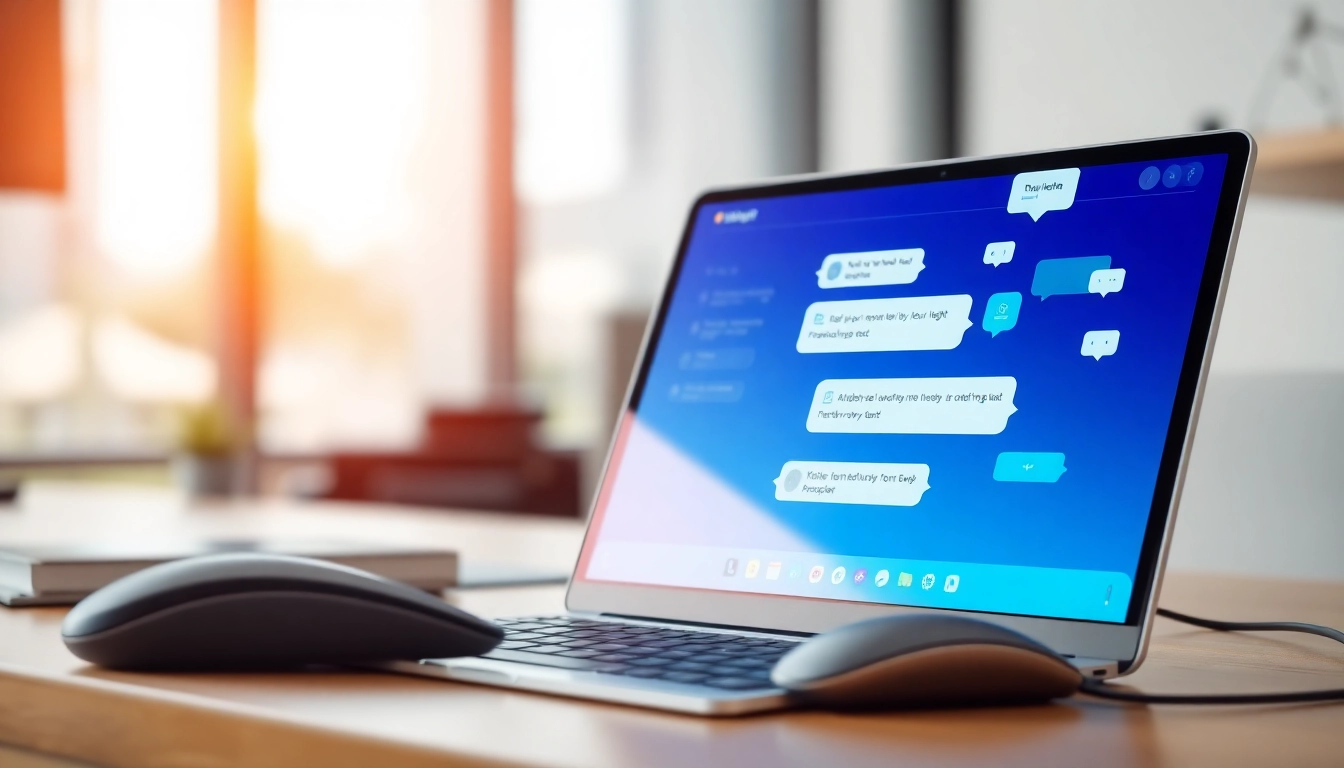Understanding Telephone Data Collection
What is Telephone Data Collection?
Telephone data collection refers to a systematic method employed by researchers to gather information through telephonic communication. During these surveys, interviewers reach out to respondents via phone calls, guiding them through a structured series of predetermined questions. This method is particularly useful in market research, public opinion sampling, and various types of social statistics, offering a reliable way to access and analyze data efficiently.
By employing a telephone data collection approach, organizations obtain real-time insights, allowing for timely and strategic decision-making. It not only ensures a broad reaching demographic but also streamlines the data collection process, rendering it a vital tool in contemporary research methodologies.
History and Evolution of Telephone Surveys
The roots of telephone data collection can be traced back to the mid-20th century, coinciding with the rise of the telephone as a common household item. The introduction of Random Digit Dialing (RDD) in the 1970s transformed the landscape of survey methodologies, providing a more randomized and less biased way of reaching respondents. The connection of telephones to Computer Assisted Telephone Interviewing (CATI) systems marked a significant advancement, enabling interviewers to navigate surveys with increased efficiency.
As technology continued to evolve, so did the means of conducting these surveys. By integrating mobile capabilities, researchers are now able to collect data from smartphones and other portable devices, broadening access and enhancing respondent engagement. Moreover, the advent of voice response systems has allowed for fully automated surveys, thereby reducing operational costs and improving efficiency.
The Importance of Telephone Data Collection in Research
Telephone data collection remains a cornerstone of research in various fields due to its numerous advantages. Firstly, it provides an effective means of reaching a diverse audience, which is imperative in obtaining comprehensive data sets. Secondly, the immediacy of telephone interactions allows for rapid data collection and analysis, often making it possible to derive insights that guide timely decision-making.
Additionally, telephone surveys reduce geographical barriers and can reach populations that may be difficult to survey face-to-face, including those in remote or inaccessible areas. This is especially relevant in global studies and for agencies looking to capture insights from specific demographics.
Benefits of Telephone Data Collection
Cost-Effectiveness Compared to Other Methods
One of the most significant advantages of telephone data collection lies in its cost efficiency. Compared to traditional face-to-face interviews, telephone surveys are less expensive to execute. Respondents do not require travel arrangements, and the overall time investment for the interviewer can be significantly reduced.
Organizations can save on logistical costs associated with conducting interviews in person while still obtaining quality data. Moreover, utilizing technologies like CATI can further streamline the process, as they allow for efficient call management and data entry, cutting down on administrative overhead.
Reach and Accessibility of Target Demographics
Telephone data collection offers a unique capability to reach a wide array of demographics. This is particularly beneficial when targeting niche populations or specific geographical areas where face-to-face interaction may not be feasible. Organizations can effectively engage participants who might typically be excluded from research due to barriers such as distance, time constraints, or mobility issues.
This flexibility also extends to language and access, as surveys can be conducted in multiple languages or dialed into systems that provide translation services. Thus, the potential for inclusivity significantly enhances the reliability and diversity of the data gathered.
Real-Time Data Gathering Advantages
The real-time capabilities of telephone surveys create a dynamic data collection environment where immediate feedback can be processed and analyzed. This immediacy is critical for organizations operating in fast-paced industries, allowing them to adapt their strategies based on up-to-date findings.
Furthermore, the ability to capture responses as they occur means that researchers can tailor follow-up questions based on previous answers, leading to deeper insights and more qualitative data. This added layer of interaction empowers researchers to navigate complex responses with nuance and agility.
Challenges in Telephone Data Collection
Respondent Resistance and Ethical Considerations
Despite the many advantages, telephone data collection is not without its challenges. One such difficulty is the potential for respondent resistance. Many individuals are reluctant to engage with phone surveys due to privacy concerns or previous negative experiences with telemarketing calls. As a result, response rates can suffer, impacting the robustness of the collected data.
Additionally, ethical considerations arise in ensuring that participants fully comprehend their rights and the usage of their data. Researchers bear the responsibility of maintaining transparency regarding the purpose of the survey and how the information will be employed. Implementing measures such as obtaining consent and providing exit options for respondents can alleviate some of these concerns and foster a more cooperative environment.
Sample Bias and Demographic Limitations
Telephone surveys can also be susceptible to sample bias. Certain populations, particularly younger individuals or those from lower-income backgrounds, are less likely to engage via landline or even mobile phones, thereby skewing results. This is compounded by the declining use of landline telephones, suggesting that reliance on traditional telephone methods may not provide a fully representative sample.
Furthermore, specific groups may be harder to reach due to time-of-day preferences for calls, leading to demographic limitations in data collection. Researchers need to account for these biases by employing multiple modes of data collection or adjusting their recruitment strategies accordingly.
Data Quality and Accuracy Issues
Ensuring high data quality and accuracy is paramount in telephone surveys. Respondents may misunderstand questions or provide socially desirable answers instead of their true feelings, which affects the reliability of the data. Moreover, interviewer bias can come into play where the tone or phrasing of questions influences responses.
To combat these issues, researchers must invest in rigorous training for interviewers, emphasizing the importance of maintaining neutrality and clarity throughout the interview process. Tools such as pre-testing of surveys or incorporating open-ended questions can also assist in enhancing the validity and richness of the data collected.
Best Practices for Conducting Telephone Surveys
Designing Effective Questionnaires
A well-structured questionnaire is critical to successful telephone data collection. Questions should be clear, concise, and devoid of jargon to maximize understanding. An ideal approach involves a combination of closed-ended and open-ended questions that encourage elaboration while also allowing for quantitative analysis.
Additionally, it is advisable to pilot test questionnaires before widespread deployment to identify any issues related to clarity or logic flow. Feedback from this process can help refine questions, making them more effective in achieving research objectives.
Training Interviewers for Optimal Engagement
Training interviewers is a fundamental aspect of successful telephone data collection. Interviewers should be equipped with skills not only in technical aspects such as using calling software but also in fostering rapport with respondents. Techniques for active listening, managing difficult conversations, and maintaining a neutral stance are essential for gathering quality data.
Regular performance reviews and feedback sessions can help identify areas for improvement and ensure interviewers are constantly enhancing their skills and approach.
Implementing Technology for Enhanced Data Collection
Leveraging technology can significantly enhance the efficiency and effectiveness of telephone surveys. Invest in systems like CATI to streamline the process from call scheduling to data entry. This can help minimize human error and provide real-time data collection capabilities.
Moreover, exploring AI-driven technologies, such as voice recognition and automated call scheduling, can offer innovative solutions to common challenges in telephone surveys. By staying updated with technological advancements, researchers can continuously optimize their data collection methods.
Measuring the Success of Telephone Data Collection
Key Performance Indicators to Track
To evaluate the success of telephone data collection efforts, organizations should monitor various Key Performance Indicators (KPIs). Response rates, completion rates, and the quality of data collected are critical metrics to consider. Additionally, tracking the time taken to complete interviews and data processing times can reveal opportunities for operational improvements.
Another important KPI is the cost per completed interview, which provides insights into the financial effectiveness of the survey process, allowing for more strategic budgeting in future projects.
Analyzing Collected Data for Insights
Once data has been collected, the next step is conducting thorough analysis. Utilizing statistical software or data visualization tools can assist in uncovering patterns, trends, and correlations within the collected information. This analysis will reveal actionable insights that can drive decision-making and strategic planning.
It is also beneficial to report findings in a manner that is accessible to stakeholders, employing clear visuals and summaries that emphasize key points. This approach ensures that insights derived from the data can be easily understood and disseminated throughout the organization.
Case Studies: Successful Telephone Surveys in Action
Learning from real-world examples can provide valuable insights into effective telephone data collection practices. One notable instance is a market research study conducted to determine consumer preferences in a new product launch. By implementing a well-structured telephone survey with a diverse demographic, the researchers collected comprehensive feedback that shaped marketing strategies and product adjustments, ultimately leading to greater market success.
Another case involves a public health agency utilizing telephone surveys to gauge community response during a health crisis. The agency was able to quickly analyze the collected data, leading to timely interventions that addressed public concerns, demonstrating the impact of effective telephone data collection on community welfare.



